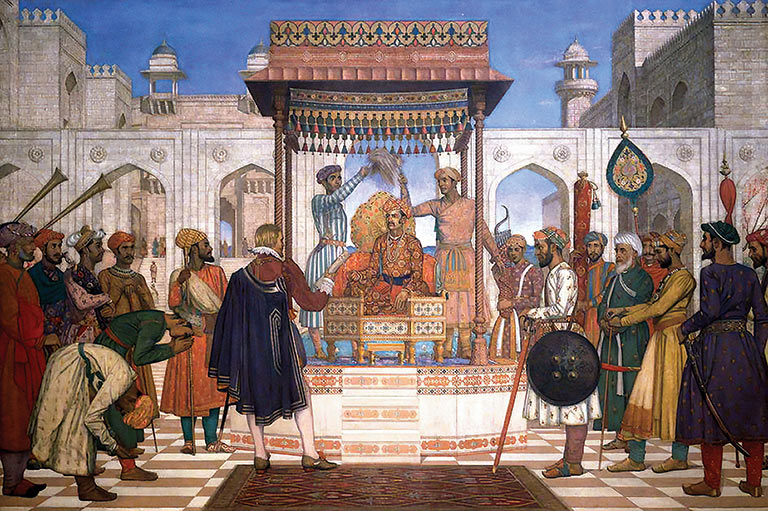The history of Bangladesh is a rich tapestry woven from ancient civilizations, colonial rule, struggle for independence, and modern nation-building. Here’s a concise overview:
Ancient and Medieval Periods
- Early Settlements (c. 1000 BCE–4th Century CE): The region of modern-day Bangladesh, part of the Bengal delta, saw early human activity due to its fertile land and rivers. Archaeological sites like Wari-Bateshwar indicate trade with Southeast Asia and the Roman world. The area was influenced by Vedic culture and later Buddhism and Jainism.
- Maurya and Gupta Empires (4th Century BCE–6th Century CE): Bengal was part of these pan-Indian empires, with Buddhism flourishing under rulers like Ashoka. The Gupta period saw cultural advancements, including Bengali language roots.
- Pala and Sena Dynasties (8th–13th Century): The Buddhist Pala dynasty (750–1174) brought stability, promoting art, education (e.g., Nalanda University), and trade. The Hindu Sena dynasty followed, introducing Brahminical culture until the Muslim conquest in the 13th century.
Muslim Rule (13th–18th Century)
- Delhi Sultanate and Bengal Sultanate (1204–1576): After Bakhtiyar Khilji’s conquest, Bengal became a semi-independent sultanate by the 14th century. It was a hub for trade, with Dhaka and Chittagong as key ports, exporting muslin and silk. The Bengal Sultanate fostered a syncretic culture blending Persian, Turkic, and local traditions. Click to More
- Mughal Period (1576–1757): Bengal was absorbed into the Mughal Empire under Akbar. It became one of the wealthiest provinces, known as the "Paradise of Nations," contributing massively to Mughal revenue through agriculture and textiles. Mughal rule weakened by the early 18th century, giving way to semi-independent Nawabs like Alivardi Khan. Click to More
Colonial Era (1757–1947)
- British Rule: The Battle of Plassey (1757) marked the start of British East India Company control after defeating Nawab Siraj-ud-Daulah. Bengal was exploited for resources, leading to famines (e.g., the Great Bengal Famine of 1770, killing millions). Permanent Settlement (1793) reshaped land ownership, impoverishing peasants.
- Cultural Renaissance (19th Century): Figures like Raja Ram Mohan Roy pioneered social reforms, abolishing practices like sati. The Bengali intelligentsia, including Rabindranath Tagore, drove literary and cultural movements.
- Partition of Bengal (1905): The British divided Bengal to weaken nationalist movements, sparking protests and the Swadeshi movement. The partition was reversed in 1911, but communal tensions grew.
- Freedom Movement: Bengal was a hotbed of anti-British activity, with revolutionaries like Subhas Chandra Bose and groups like Anushilan Samiti. The 1943 Bengal Famine, killing 2–3 million, fueled anti-colonial sentiment.

East Pakistan Era (1947–1971)
- Partition of India (1947): Bengal was split, with East Bengal becoming East Pakistan, part of the new state of Pakistan. Cultural and linguistic differences emerged, as West Pakistan dominated politically and economically.
- Language Movement (1948–1952): Bengalis protested Urdu imposition, leading to the 1952 Language Movement. On February 21, students were killed, galvanizing Bengali identity. UNESCO later declared February 21 as International Mother Language Day.
- Political Marginalization: East Pakistan faced neglect, with underinvestment despite contributing heavily to Pakistan’s economy via jute exports. The 1970 Bhola Cyclone, killing up to 500,000, exposed government apathy.
- Liberation War (1971): After the Awami League’s electoral victory in 1970 was ignored, Sheikh Mujibur Rahman declared independence on March 26, 1971. Pakistan’s military launched Operation Searchlight, triggering genocide. Mukti Bahini guerrillas, backed by India, fought a nine-month war. On December 16, 1971, Pakistan surrendered, and Bangladesh emerged as a sovereign nation. Estimates of deaths range from 300,000 to 3 million, with millions displaced.
Post-Independence Bangladesh (1971–Present)
- Early Years (1971–1975): Sheikh Mujib’s government faced challenges rebuilding a war-torn economy. Political instability and famine (1974) led to his assassination in 1975.
- Military Rule (1975–1990): General Ziaur Rahman (1975–1981) and Hussain Muhammad Ershad (1982–1990) ruled, stabilizing the economy but curbing democracy. Zia introduced multi-party politics and economic reforms.
- Democracy and Challenges (1991–Present): Since 1991, Bangladesh has oscillated between democratic governments led by the Awami League (Sheikh Hasina) and BNP (Khaleda Zia). Key developments include:
- Economic Growth: From a “basket case” (as dubbed by Henry Kissinger), Bangladesh became a lower-middle-income economy by 2015, driven by garments, remittances, and agriculture. GDP growth averaged 6–7% annually in the 2010s–2020s.
- Social Progress: Improvements in literacy (74% by 2020), gender parity in education, and poverty reduction (from 44% in 1991 to 14% in 2022).
- Political Tensions: Allegations of authoritarianism under Hasina’s long rule (2009–2024) led to protests. In August 2024, she resigned amid student-led unrest, and an interim government under Muhammad Yunus took over.
Key Cultural and Social Aspects
- Language and Identity: Bengali language and culture remain central, with poets like Tagore and Nazrul shaping national identity.
- Religion: Predominantly Muslim (90%), with Hindu (9%), Buddhist, and Christian minorities. Communal harmony exists alongside occasional tensions.
- Global Role: Bangladesh contributes to UN peacekeeping and hosts over 1 million Rohingya refugees from Myanmar since 2017.
****







0 Comments